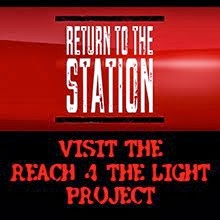
The Army Corps of Engineers sent out a press release this morning regarding the work that is continuing in Joplin, Missouri. I noted one phrase they used in the release especially; the release stated that Joplin recovery was "evaporating" from the new coverage. This is true, just like the coverage of Tuscaloosa did. There comes a time after a disaster that the news crews move on. Sure, like the other day, Mike Bettes visited Joplin and did a "30 days later" special, adopted a dog from ASPCA and showed the continuing work, but today, Mike isn't there. And neither is anyone else. The country is moving on.
While I remember the advice of President Bush after 9-11 to "return to normal", there is another side of it as well. We cannot forget.
With heat indexes rising, resources still in short supply, news coverage spotty at best and years of work to be done, I am not content to simply watch Joplin's tragedy slip into the archives on some television station's website. During the intial phases after an event, the help is overwhelming. We watched truckloads of goods dropped in the city. We watched youth groups and church groups show up by the bus-loads. Red Cross trucks dotted the streets, The Salvation Army stopped regularly to check on our team. The military and law enforcement where everywhere, and any church with a roof had become a distribution center.
Now it is changing.
We are hearing from youth groups and churches planning missions trips for a year from now. Caylee Anthony fills the news. The weather, for the most part in the United States has been pleasant, and the July 4th weekend is quickly approaching.
Yesterday, a woman in Bloomington, Indiana was speaking to our team at an event and made this statement: "The tornado in Joplin was tragic!".
We corrected her.
The tornado in Joplin IS tragic. It will be tragic for a long time to come and we need to remember
.
You see, long after the debris falls to the ground, long after the streets dry, long after the tents are folded up, the tornado is still in the town spinning through the streets causing problems with recovery, with infrastructure, with emotions, with families, with health, with economy, with life.
That tornado will be churning through that town for years, and we need to think about what we can do. The initial campaign to volunteer or to give is over, but each hour we receive word that there are very real needs for crews, for specialists, for volunteers.
It is now that we can step up. The initial surge is over. It is time to start making longer-term commitments. If you can't go, GIVE. The Chasing4Life DRT's are ready to go back as are hundreds of others, but the funding to go just doesn't exist. Is this something you can help with?
Joplin is a community of Americans, just like you and me. They are our family and our neighbors.
This July 4th while we fly our flags over pristine porches and emerald green lawns, there are tattered flags flying over piles that were once the homes of the citizens of Joplin.
This 4th of July, don't celebrate freedom. Celebrate A freedom. Celebrate the specific freedom to support teams willing and ready and geared to go to Joplin. Celebrate the freedom to give. Celebrate the freedom to help. You have these freedoms.
This 4th of July, while you sit on a blanket with your family and watch the brightly colored fireworks over your town, remember the bright lights of bursting transformers lighting up the Joplin sky just over one month ago. Remember the families in Southern Missouri that are sitting on a blanket with THEIR families because that blanket is one of the few things they have left.
It may not be the headline news story, but it should still be the heartline story...




